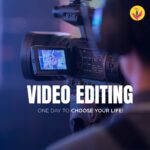Trust me, I’ve been there. For years, my artistic endeavors started and ended with a few hesitant scribbles in the margins of my notebooks. I admired beautiful illustrations, the kind that just grab you and pull you into their world, but I always figured that kind of talent was for "other people." The chosen few. Not for someone like me, who thought a stick figure was a triumph of anatomical accuracy.
But then, something shifted. Maybe it was seeing one too many stunning pieces of art online, or perhaps a quiet evening watching an artist effortlessly sketch something incredible. Whatever it was, the "what if" started getting louder. And that’s when I stumbled upon the idea of an illustration course.
It felt like a big step. A real commitment. Would I be wasting my time? My money? Would I just end up with more wobbly lines and frustrated sighs? If those questions are rattling around in your head right now, let me tell you my story. Maybe it’ll help you find your own answer.
The Spark: From Doodle Dreams to Deciding to Learn
For a long time, my "art" was just a private little hobby. I’d doodle characters in notebooks, try to copy things I liked, but it always felt like I was fumbling in the dark. I loved the idea of creating, but I just didn’t know how. My drawings lacked depth, life, and any real sense of purpose. They were just… flat.
I looked at all the amazing artists out there and felt a pang of envy mixed with admiration. "How do they do that?" I’d wonder. It seemed like magic. Eventually, I realized magic probably wasn’t the answer. Learning was.
That’s when the search began. I typed "illustration course for beginners" into my search bar more times than I care to admit. I spent hours scrolling through websites, looking at art schools, online programs, and local workshops. It felt overwhelming. There were so many options! Traditional art, digital art, character design, concept art… where do you even start?
What really drew me in were the courses that promised to teach the basics. Not just how to use a specific software, but how to think like an artist. How to see the world in lines, shapes, and colors. That sounded like what I needed. I wanted to build a strong foundation, not just learn a few tricks. After much deliberation, I chose an online illustration course that had a good reputation for starting from scratch and building skills step-by-step. It felt right. A bit scary, but right.
Stepping Into the Unknown: My First Days in the Illustration Course
Gosh, I remember the first lesson. It was about lines. Just lines! I thought, "Seriously? I’ve been drawing lines my whole life." But it wasn’t about drawing a line; it was about drawing confident lines, expressive lines, lines that had weight and purpose. We practiced drawing straight lines without a ruler, curved lines that flowed gracefully, and how different pressures created different effects. My hand ached, but something clicked. I realized I had never really thought about a line before.
Then came shapes. Simple geometric shapes: squares, circles, triangles. Again, I thought, "I know these!" But the instructor showed us how to break down complex objects into these basic forms. A car became a series of rectangles and cylinders. A human head, a sphere and a jawline. This was revolutionary for me. Suddenly, the world started looking like a giant puzzle of shapes, and I was learning how to put them together.
It wasn’t always easy. There were moments of pure frustration. My perspective drawings looked like funhouse mirrors, and my attempts at shading made objects look muddy instead of three-dimensional. I wanted to give up more than once. But the community around the course, and the patient feedback from the instructors, kept me going. They understood that everyone starts somewhere. They encouraged mistakes as learning opportunities, not failures. And slowly, very slowly, things started to make sense.
Unpacking the Artist’s Toolkit: What I Actually Learned
The course was a deep dive into so many things I never knew existed in the art world. Here are some of the big takeaways that really transformed my approach:
1. The Power of Fundamentals: Beyond Just Drawing
This was probably the most crucial part. We spent a lot of time on:
- Perspective: Learning how to make things look like they’re receding into the distance or coming forward. One-point, two-point, even three-point perspective. It’s like learning a secret code for depth. My once-flat buildings started to have corners and weight.
- Composition: How you arrange elements on a page. Where to put the main focus, how to lead the viewer’s eye. It’s like choreographing a dance for your audience’s gaze. This made my drawings feel less random and more intentional.
- Anatomy (Basic): Not just drawing perfect muscles, but understanding basic proportions and how the human body moves. Suddenly, my characters didn’t look like stiff mannequins anymore; they had a sense of life and gesture.
- Light and Shadow: How light hits an object, creating highlights, mid-tones, core shadows, and reflected light. This was pure magic. It’s what makes things look solid and real instead of flat outlines.
2. Getting Cozy with Color Theory
Oh, color! Before the course, I just picked colors I liked. Now, I understand how colors interact, how they create mood, and how to use them harmoniously. We learned about:
- Color Wheel: Primary, secondary, tertiary colors.
- Color Harmonies: Analogous, complementary, triadic – fancy words for combinations that just work beautifully together.
- Warm and Cool Colors: How they can make things pop or recede, evoke feelings of warmth or cold.
- Saturation and Value: Not just how bright a color is, but how intense it is and how light or dark it is.
It was like learning a new language to express emotion and atmosphere in my art. My illustrations went from simply "colored" to truly "painted."
3. Embracing the Tools: Traditional and Digital
My course covered both, which I was really grateful for.
- Traditional Media: We experimented with pencils, charcoal, ink, watercolors, and acrylics. Each medium has its own personality, its own strengths and weaknesses. It was wonderful to get my hands dirty and feel the texture of paper and paint. It taught me patience and how to embrace happy accidents.
- Digital Tools: Learning a new software (for me, it was Procreate and a bit of Photoshop) felt like learning a new instrument. There were so many buttons and layers and brushes! But the instructors broke it down, showing us how to use layers, blend colors digitally, create custom brushes, and use tools to speed up the process. It opened up a whole new world of possibilities for experimentation and correction. Suddenly, erasing a mistake wasn’t a big deal!
4. Finding My Own Voice: Developing a Personal Style
This was perhaps the most exciting and personal part of the journey. The course didn’t just teach us how to draw; it encouraged us to figure out what we wanted to draw and how we wanted our art to look.
We explored different illustration styles, from cartoony to realistic, from painterly to graphic. We were given assignments that pushed us to experiment, to try new things, and to see what felt natural and exciting. There were exercises in quick sketching to capture gesture, and longer projects to refine a complete illustration.
Getting feedback on my work was invaluable here. My instructors and fellow students pointed out things in my drawings that felt uniquely "me," even when I couldn’t see them myself. It was through this process of trying, failing, and refining that I slowly started to understand what my own artistic voice sounded like. It wasn’t about copying others, but about letting my own personality shine through.
The Unexpected Gifts: More Than Just Drawing Skills
Taking that illustration course wasn’t just about learning to draw better; it was about giving myself permission to be creative, to explore a part of myself I’d kept hidden.
- A New Way of Seeing: I started noticing the play of light on everyday objects, the unique shapes of trees, the way colors blend in a sunset. The world became a constant source of inspiration, a giant art reference library.
- Problem-Solving Skills: Every illustration is a series of small problems to solve: How do I make this character look sad? How do I show depth here? How do I tell this story with just one image? It trains your brain to think creatively and logically.
- Patience and Resilience: Art isn’t always easy. There are days when nothing goes right. But the course taught me to push through those moments, to keep practicing, and to trust the process.
- Community: I connected with other aspiring artists, shared my struggles and triumphs, and saw amazing work from people just like me. It made the journey feel less lonely and more exciting.
- Confidence: This was huge. For the first time, I felt confident enough to share my art, to even call myself an "artist." It wasn’t about being perfect; it was about the joy of creating.
Is an Illustration Course for You? My Advice to Beginners
If you’re still on the fence, let me offer a few thoughts from someone who took the leap:
- Start with the Basics: Don’t jump straight into complex digital painting if you don’t understand perspective or composition. A good illustration course will build your skills from the ground up.
- Embrace Mistakes: They are your best teachers. Seriously. Every "bad" drawing is a step towards a better one.
- Practice Consistently: You don’t need to draw for hours every day, but regular practice, even just 20-30 minutes, makes a huge difference. Like learning a language, immersion helps.
- Find a Community: Whether it’s online or in person, having other artists to share with and get feedback from is incredibly motivating.
- Don’t Compare Yourself: Everyone’s journey is different. Focus on your own progress, not on how far ahead someone else might seem.
- Enjoy the Process: This is the most important one. If you’re not having fun, it becomes a chore. Let yourself play, experiment, and enjoy the act of creating.
My Journey Continues: The Best Decision I Ever Made
Looking back, enrolling in that illustration course was one of the best decisions I’ve ever made. It wasn’t just about learning techniques; it was about discovering a passion, building confidence, and finding a whole new way to express myself. My art isn’t "perfect" by any means, and I’m still learning every single day. But now, when I look at a blank page, I don’t feel dread; I feel excitement. I see possibilities.
So, if you’re standing at the edge of that same decision, feeling that little pull towards creativity, I wholeheartedly encourage you to take the plunge. Find an illustration course that feels right for you, whether it’s online, at a local studio, or even through books and dedicated self-study. The world of art is waiting, and trust me, it’s a wonderfully colorful place to be. You might just surprise yourself with what you can create.



